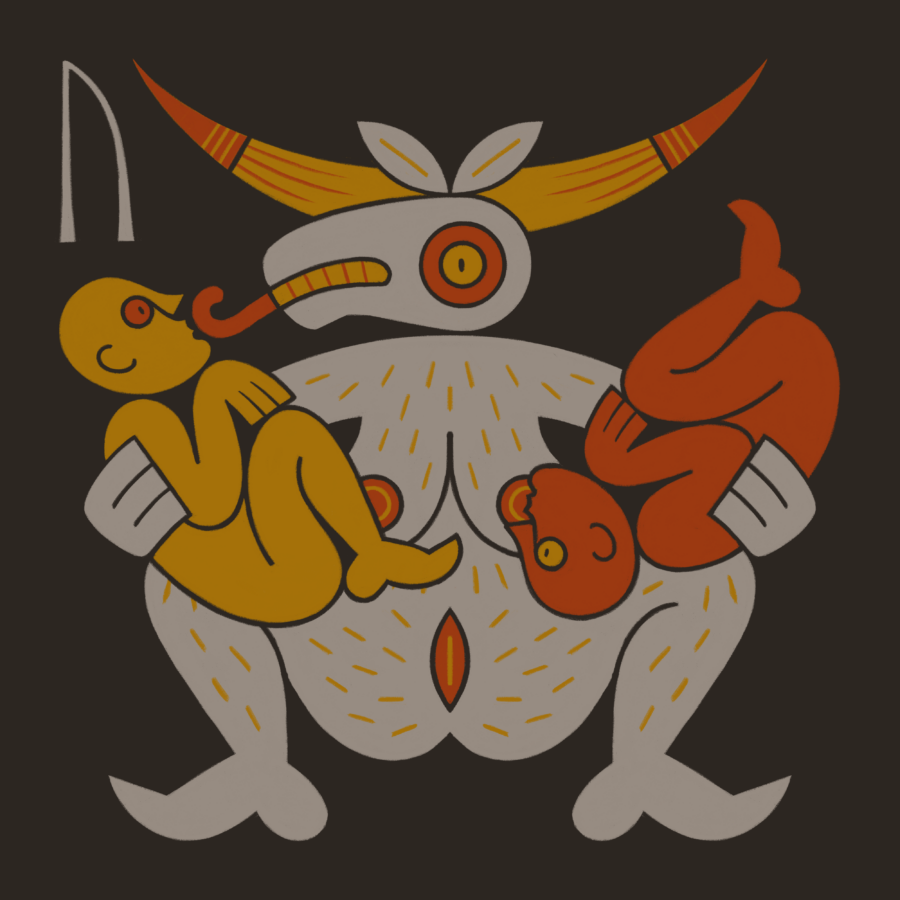
ᚢ Ūruz
April 18, 2024
Aurochs
The rune name Ūruz translates to Aurochs (wild ox). However, the rune later changed its meaning to rain or drizzle (the words for aurochs and rain were probably homonyms).
The English rune poem describes the aurochs as a feral beast prowling the moor. In contrast to the livestock of the Fehu rune, this creature does not come willingly and puts up a hell of a fight if it’s crossed. It is a real force of nature that should not be underestimated.
The later poems all describe the rune as rain from different perspectives. The Icelandic poem has actual precipitation from the clouds, destroying the crop harvest and annoying the herder, and the Swedish poem simply has bad weather. On the other hand, the Norwegian poem most likely describes the rune as the rain of slag from iron being forged.
While the two names have different precise meanings, they both reflect ideas of raw natural powers, whether the instinctive forces of wild beasts or the relentless rain pouring from the sky. Especially when contrasted with the Fehu rune and its meaning of movable, manageable wealth that you can manipulate and direct. The meaning of Ūruz can be understood as the inevitable persistence of natural forces, similar to the green leaves emerging in spring, birth after conception and the awakening of animal instincts.
The image is composed of a female horned aurochs nursing an inverted human figure and licking the face of an upright figure, both of whom are in fetal postures. Her naked body is facing forward, and she is rooted with both feet firmly planted on the ground.
She is the primordial cow Auðhumla (possibly meaning ‘abundance of humming’), giving milk to the ancestor of all the Jotnar, Ymir (meaning ‘rumble’ or ‘roar’), created by the heat and liquids amalgamating in the yawning void (ON: ‘ginnungagap’). She’s licking Búri, the ancestor to all the Æsir, free from the salty icy blocks. The offspring of Búri ultimately kill Ymir and create the physical world out of his body.
Although Auðhumla and Ūruz are not directly linked, she embodies the primal nature of the rune well, not least with her abundant streams of milk paralleling the pouring of rain that nourishes the land on which it falls.
The myth has a clear narrative theme of abstract substance in the shape of raw noise materialising through spoken word. The roar, Ymir, in the yawning void, Ginnungagap, sustained by the ample streams of humming, Auðhumla, is killed by the conscious Æsir, who pronounce the order of the physical world and time, thus transforming incomprehensible noise into intelligible sounds by forming words.
The roles of the two primordial ancestor figures are mirrored in how Auðhumla nurtures them. While Ymir is given the bodily produce of milk, connecting him to his primal nature, Búri is licked free by the mouth of Auðhumla, connecting him to the sentient head of the animal and the mouth from which words are formed.
English Rune Poem
Aurochs — audacious and amply horned,
the fiercest of beasts — fights with its horns —
Mighty moor-stomper; mettlesome creature!
Original language:
Ūr — byþ anmōd and oferhyrned,
felafrēcne dēor — feohteþ mid hornum —
mǣre mōrstapa; þæt is mōdig wuht!
Icelandic Rune Poem
Drizzle — is the sky’s tears
and smashing of hay
and herdsman’s hate.
Original language:
Úr — er skýja grátr
ok skára þverrir
ok hirðis hatr.
Norwegian Rune Poem
Drizzle — of sparks come from hot iron;
In snow reindeer often run.
Original language:
Úr — er af illu iarne;
oft lœyper ræin a hiarne.
Swedish Rune Poem
Drizzle — Worst weather.
Original language:
Ur — urväder värst.
Sources
Senra Silva, Inmaculada, 2003. ‘The significance of the rune-names evidence: from the Anglo-Saxon and Nordic sources’. Universidad de Sevilla. Departamento de Filología Inglesa.